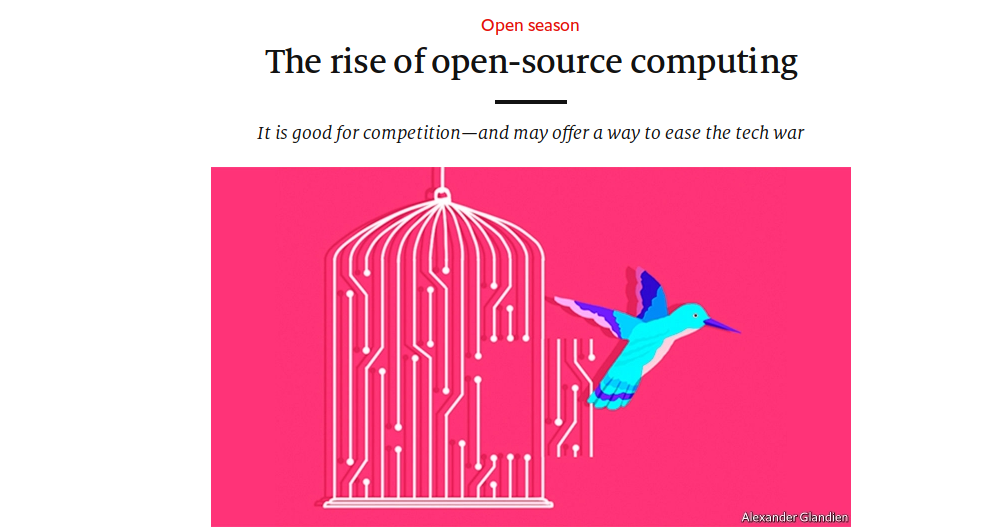It is a happy coincidence that the same week we uploaded my participation as a keynote speaker at the EADA Business Scool Annual Meeting, The Economist published an open-ed that underlines some of the core ideas. But more importantly, it also complements the talk with the latest developments that bring a geopolitical dimension to the unstoppable raising of “open-source”. IBM is taking the “open source” spirit also to hardware: in August, IBM made its Power chip designs open-source. And they are not the only ones. The RISC-V open-source chips originated at the University of California, Berkeley, are getting the attention of companies like Google, Nvidia, and Qualcomm.

Beyond the positive economic impact in terms of competition and affordable prices, (now we are moving towards the Internet of Things), The Economist remarks on the political significance of the use of open-source chips in these days. What happens with the “technological cold war” that China and the USA are waging? Chinese companies such as Huawei or Xiomi can use RISC-V. In fact, India’s government has invested in the RISC-V development and promoting a technology ecosystem around them to lower international technological dependence.
On the other hand, there is this actual threat that China’s products could become a Trojan horse that could potentially be used in political, economic and societal conflicts. Open-source devices are transparent and can be verified and trusted. A liberal publication as The Economist, opposed to any kind of costly economic and technological wars, considers that open-source “can help to calm tempers”.

